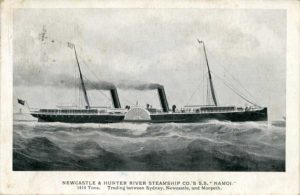Australia has an identity issue. Or two. Or three. And having representatives of the British crown sitting on top of its elected governments doesn’t help matters at all.
For non-Australians who might be tempted to think I’m joking, here’s a quick sketch of my strange country.
As a white settler nation, forcibly transplanted over the top of a pre-existing ancient population and sitting uncomfortably on the fringe of Asia, Australia is a very long way from the Europe of its white origins.
White Australians love to be thought of as in tune with the huge continent they occupy, but mostly we are not. In December, for example, we send each other Christmas cards decorated with snowmen and winter scenes even though this is the blazing peak of southern summer and it might easily be 40 degrees Celsius in many parts of the country.
In case you didn’t know this, Australia began its life in the late 1700s as an open-air prison for deported convicts from Britain, dumped on the other side of the world from their erstwhile homes partly because it was one of the few remaining options for this practice and partly because Britain didn’t want any other colonial powers setting up camp on the apparently huge but mostly unwanted land mass. Unlike India and other colonial possessions, this island continent offered no apparent easy wealth, but left unclaimed it could have become a base from which rival powers might have interfered with British trade, so it was grasped – rather half-heartedly. Half-heartedly it was held until signs emerged that real money might be made here after all and British capital moved in with a will.
Unlike the USA, Australia required no revolution to win “independence”, but then, its independence was open to question from the start. Even after 1901 when the various colonies that had grown around the edges of the continent managed – with some difficulty – to federate into the nation known as Australia, the new entity remained a tightly held British possession.
Uncomfortable conscience
White Australia wrestles uncomfortably with its conscience when it comes to the dispossessed Indigenous races it displaced, often with considerable violence and cruelty. Proposals for reconciliation are usually controversial and the most extraordinary blind eyes are turned to truly horrendous present-day instances of discrimination and injustice towards Australians of Indigenous origin. Much of this injustice is baked into the nation’s administrative and government systems and is treated by much of white Australia as somehow inevitable and impossible to change.
White Australia is racist at its core. A great many white Australians are anything but racist, but there is no escaping the conclusion that the group as a whole is xenophobic. While the actual White Australia Policy is no longer a legal reality and while there are now very large non-white, non-European populations within Australia, the original tensions still exist and are sometimes intensified by the realisation that these sub-populations often have racism issues of their own.
Australia has a particularly cruel policy towards people claiming refugee status, especially non-whites who arrive by boat. Such people are often locked up in island prisons for years, subject to opaque governance by multinational corporations whose actions are scarcely visible to most Australians – who probably like it that way. This dislike of refugees may be linked to the fact that Australia is usually a keen participant in the wars and invasions that create a great many of the refugees in the first place.
Australia is remarkably militaristic, if you look closely. Its biggest public holiday is Anzac Day, which is our version of Veterans Day. Anzac Day started during World War I as a day of mourning and remembrance, acknowledging Australia’s proportionately very high contribution of troops to Britain’s war effort and the high mortality rate among those troops. But over the years, as the families directly affected by those casualties have died off, the day has become somewhat more of a celebration of militarism and flag-waving patriotism. Travel around Australia’s biggest city of Sydney and you might cross the Anzac Bridge, drive on a highway marked by sculptures representing the Light Horse regiments of World War I, travel to Canberra on a highway dotted with reminders of military medal-winners and arrive at the national capital to find Parliament House symbolically aligned with the war memorial – arguably white Australia’s holy of holies.
Deputy Sheriff
Australia is today a deeply integrated unit of the US Empire, to the extent that some leaders of other Asia-Pacific nations deride Australia as “America’s deputy sheriff” in the region. This deep integration dates to World War II, when then Prime Minister John Curtin made his famous “we look to America” speech. At that time it seemed Australia’s worst “yellow peril” nightmares were coming true. The Japanese were on the march through South East Asia and would soon take the supposedly impregnable British fortress of Singapore, sink two major British capital ships and capture tens of thousands of British, Australian and allied troops. The Japanese would soon torpedo merchant ships off Australia’s coast and bomb and shell Australian cities.
Britain let Australia down. Australia had always paid its tribute to “the Mother Country” in troops and treasure and had assumed that it would live secure under the umbrella of Imperial defence. It was a shock when the deal proved unenforceable, and Australia’s allegiance shifted promptly to the new Imperial power of the USA. Arguing furiously against Britain’s “beat Germany first” policy, Curtin begged the US to consider the benefits of ensuring the Japanese did not invade Australia.
Ever since then, Australia has been a reliable fee-paying member of the US Empire.
Just as in 1914 when then Australian Labor leader Andrew Fisher pledged Australia’s support for Britain’s war effort “to the last man and the last shilling”, Australia was now ready and willing to send troops wherever America wanted them. “All the way with LBJ”, was Australia’s Vietnam war cry and whenever a US president calls for recruits to the latest “Coalition of the Willing” Australia is usually close to first in line.
The only hiccup was the Whitlam Labor Government which in the early 1970s enacted a vigorous program of social reforms and began to scrutinise the US military and spy bases on Australian soil. Whitlam was famously disposed of with some help from the CIA and Buckingham Palace and it has been business as usual ever since. These days Labor governments are perhaps even more keen than conservative ones to prove their loyalty, possibly fearing to be tarred with the Whitlam brush and placed on the CIA’s to-do list.
External observers won’t be surprised that the CIA might have taken an interest in an Australian government that was asking too many questions and starting to act a little uppity. They might be surprised, however, that Buckingham Palace and the British Royal Family had a role.
Here then, is another of Australia’s identity issues, brought recently into the spotlight again by the peculiar story of recent former Prime Minister Scott Morrison managing to swear himself in, secretly, to a number of ministerial portfolios.
All the Queen’s men
To achieve this weird result Morrison needed the assistance of a personage known as the “Governor-General” of Australia. This person is the direct representative of the Queen of England in Australia, occupying a role that is generally thought by most to be ceremonial and symbolic, but carrying the power to sack an elected Australian government, if this is considered by the British monarchy and those associated with it to be advisable for some reason.
It’s an amazing situation, but perhaps not entirely surprising when you consider that the portrait of the British monarch appears on Australia’s coins and that Australia’s flag is basically just the British flag with the southern cross next to it.
As a matter of fact, all Australian states (the former colonies, which now exercise some vestigial powers, often to the chagrin of the Federal Government) have their own “governors” who are the state-based analogues of the Governor-General and represent the interests of the British monarch in their respective states. These governors can sack state governments too, as happened in the state of New South Wales in 1932 when the Lang Labor Government upset British investors by suggesting they might wait for some interest payments on Australian bonds, since the Great Depression meant money was wanted for more pressing social needs.
The British bondholders won, of course, with the help of the NSW Governor.
But these gubernatorial dismissals were both a long time ago.
Now a whole new generation of Australians has been astonished to learn that the Governor-General – often portrayed as some kind of extra safeguard for the people in case of governments that go off the rails – is actually nothing of the sort.
Here was Prime Minister Scott Morrison, clearly off the rails, and the Governor-General did nothing but initial the documents this unhinged elected official put in front of him.
Observers of this episode are entitled to conclude that these various governors, as representatives of the British crown, exist only to safeguard the interests of that crown and its commercial and strategic allies. That, at least, is my conclusion.
Do away with them all, is what I say.



